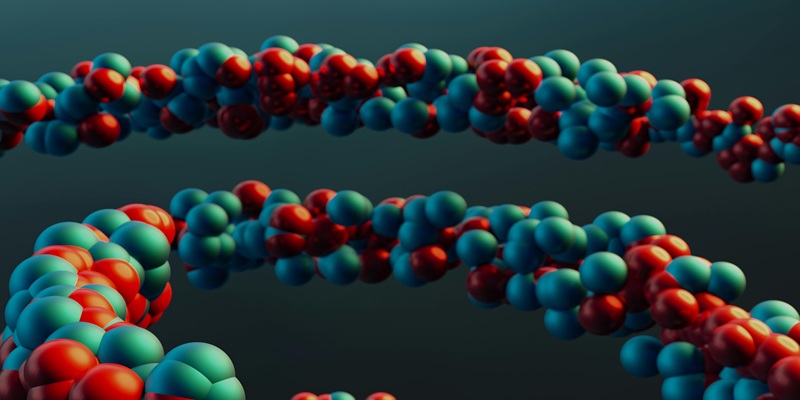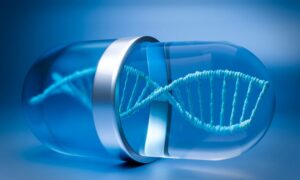Nanotechnology, a groundbreaking field that involves manipulating matter at the molecular and atomic levels, is rapidly transforming the medical industry. Scientists and researchers are leveraging nanoscale materials to develop cutting-edge treatments, highly accurate diagnostic tools, and advanced drug delivery systems. The influence of nanotechnology in medicine is profound, offering new solutions for managing chronic diseases, improving healthcare efficiency, and enhancing overall patient outcomes.
The Role of Nanotechnology in Medicine
Nanotechnology is redefining medical science by introducing solutions that conventional methods cannot achieve. Nanoparticles, due to their minute size, can interact with biological systems at the cellular and even molecular level. This capability allows for increased precision in targeting diseases, minimizing adverse side effects, and improving the overall effectiveness of medical treatments.
Nanotechnology in Drug Delivery Systems
One of the most promising applications of nanotechnology in medicine is its impact on drug delivery. Traditional drug administration methods often result in inefficiencies, as drugs spread throughout the body rather than directly targeting diseased cells. Nanotechnology enables a revolutionary shift by allowing medications to be delivered precisely where they are needed, significantly improving therapeutic outcomes while reducing potential side effects.
Key Advantages of Nanotechnology in Drug Delivery
- Targeted Therapy: Nanoparticles can be programmed to identify and bind to diseased cells, preventing damage to healthy tissues.
- Controlled Release Mechanism: Nano-based drugs can be released at a controlled rate, maximizing therapeutic benefits over extended periods.
- Enhanced Drug Absorption: Nanoparticles improve the solubility and bioavailability of drugs, making them more effective within the body.
Various nanocarriers, including liposomes, polymeric nanoparticles, and dendrimers, have been developed to transport drugs precisely to their intended destinations. A notable example is liposomal doxorubicin, a nano-encapsulated chemotherapy drug that reduces toxicity while increasing treatment effectiveness.
Nanotechnology in Cancer Treatment
Cancer remains one of the most challenging diseases to treat, but nanotechnology has introduced innovative approaches that have revolutionized oncology. Conventional chemotherapy affects both cancerous and healthy cells, leading to severe side effects. Nanomedicine allows for precision treatment, ensuring that cancerous cells are directly targeted while sparing healthy tissues.
How Nanotechnology Enhances Cancer Treatment
- Early Detection: Nano-based biosensors can detect cancerous biomarkers at early stages, improving survival rates.
- Improved Imaging Techniques: Nanoparticles enhance imaging quality in MRI and CT scans, aiding in accurate tumor localization.
- Targeted Chemotherapy: Nanocarriers allow for precise drug delivery to tumors, reducing the collateral damage to healthy tissues.
Gold nanoparticles and quantum dots are particularly promising in cancer treatment. Gold nanoparticles can absorb laser light and generate localized heat, effectively destroying cancer cells without harming nearby healthy tissues.
Nanotechnology in Disease Diagnosis
Early and accurate diagnosis is crucial for effective disease management. Nanotechnology significantly enhances diagnostic capabilities by improving the sensitivity and precision of detection tools, enabling faster and more reliable diagnoses.
Examples of Nano-Based Diagnostic Techniques
- Nanobiosensors: Detect biomarkers for diseases such as diabetes, infections, and cancer with high accuracy.
- Quantum Dots: Fluorescent nanoparticles used in imaging to highlight diseased cells more effectively.
- Lab-on-a-Chip Technology: A nanoscale device that can conduct multiple diagnostic tests on a single chip.
Nano-enabled rapid testing kits have played a critical role in early disease detection, such as in the case of COVID-19, where they facilitated quicker and more accurate identification of infections.
Nanotechnology in Regenerative Medicine
Regenerative medicine aims to repair or replace damaged tissues and organs. Nanotechnology plays a vital role in this field by enabling the development of biomaterials that support cell regeneration and tissue healing.
- Key Applications of Nanotechnology in Regenerative Medicine
- Nanoscaffolds: Provide structural support for cells to grow and regenerate tissues.
- Stem Cell Therapy Enhancement: Nanoparticles improve stem cell delivery and differentiation, boosting regenerative potential.
- Bone and Cartilage Regeneration: Nano-based materials mimic the structure of natural bone, aiding in orthopedic treatments.
Scientists are continuously developing nanostructured scaffolds that facilitate wound healing and organ repair. Biocompatible nanofibers, for instance, promote tissue regrowth, offering hope for burn victims and patients suffering from degenerative diseases.
Nanotechnology in Neurological Disorders
Neurological disorders, including Alzheimer’s, Parkinson’s, and brain tumors, pose significant treatment challenges due to the presence of the blood-brain barrier (BBB). Nanotechnology presents novel solutions by enabling effective drug delivery to the brain, overcoming this natural protective mechanism.
How Nanotechnology is Advancing Neurological Treatments
- Nanocarriers for Brain Drug Delivery: Nanoparticles transport medications across the BBB, improving treatment outcomes.
- Enhanced Neuroimaging: Nano-based contrast agents improve MRI and PET scan precision, aiding in early disease diagnosis.
- Neuroprotection and Repair: Nanomaterials aid in nerve regeneration and recovery from brain injuries.
Innovative nanoformulations are also being developed to treat stroke and traumatic brain injuries, offering new hope for patients suffering from these conditions.
Challenges and Ethical Considerations
Despite its numerous benefits, nanotechnology in medicine comes with challenges and ethical concerns that must be addressed.
Key Challenges
- Potential Toxicity: Some nanoparticles may have unintended toxic effects on human health.
- Regulatory Hurdles: Stringent regulations and lengthy approval processes can delay the adoption of nano-based medical treatments.
- High Costs: The expensive nature of nanomedicine research and treatments may limit accessibility for lower-income populations.
Additionally, ethical concerns surrounding data privacy in nano-enabled diagnostics and the potential misuse of nanotechnology for harmful purposes need to be carefully managed.
Future Prospects of Nanotechnology in Medicine
The future of nanotechnology in medicine is promising, with ongoing research focused on personalizing treatments and enhancing therapeutic precision. Emerging trends suggest that nanomedicine will continue to transform healthcare in the coming decades.
Potential Future Trends in Nanomedicine
- Integration of AI and Nanotechnology: Artificial intelligence is being used to analyze data from nano-enabled medical devices, improving diagnosis and treatment personalization.
- 3D Bioprinting with Nanomaterials: Scientists are exploring the possibility of using nanomaterials in 3D bioprinting to create artificial organs for transplantation.
- Wearable Nanosensors for Health Monitoring: Smart nanosensors embedded in wearable devices could continuously monitor health conditions in real time, allowing for early intervention.
Conclusion
Nanotechnology is fundamentally transforming medicine by introducing innovative approaches in drug delivery, diagnostics, cancer treatment, regenerative medicine, and neurological disorders. Despite the challenges, continued research and innovation are expected to pave the way for safer, more effective medical applications. As technology progresses, the integration of nanotechnology with other fields such as AI and biotechnology will further enhance its impact, ensuring that the future of medicine is more precise, personalized, and efficient.



































